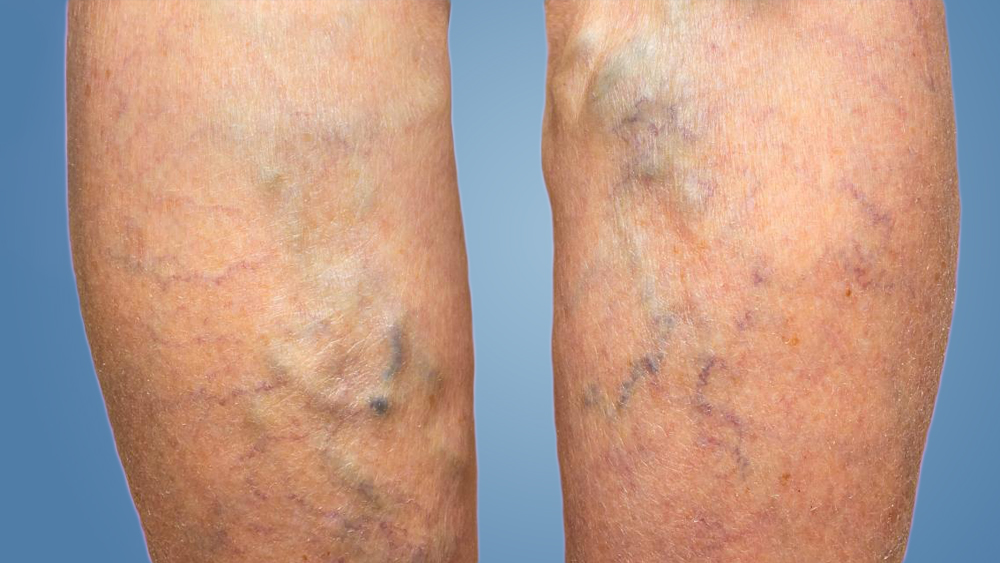Varicose Veins in Leg
- Home
- Varicose Veins in Leg


Varicose veins in leg are more common than previously thought. These are swollen veins, most frequently found in the legs but sometimes occurring on other parts of the body. Though they are not a serious condition they are often painful and inconvenient. They can also lead to other health issues if left untreated.
Ambulatory Phlebectomy is a surgical technique that does not leave scars after treatment.
When blood travels through your body, it relies upon valves in the veins. If any of these valves are damaged, blood does not move as efficiently, and it may collect in veins, causing them to swell. Valves may become damaged during extended periods without motion, either standing or sitting.
Although they can be painful and disfiguring, they are usually harmless. When inflamed, they become tender to touch and can hinder circulation to the point of causing swollen ankles, itchy skin, and aching in the affected limb.
Get rid of Varicose Veins by Endovenous Laser Ablation technique.
Besides a surface network of veins, your legs have an interior, or deep, venous network. On rare occasions, an interior leg vein becomes varicose. Such deep varicose veins are usually not visible, but they can cause swelling or aching throughout the leg and maybe sites where blood clots can form.
Abnormally dilated veins that appear on the legs are a common problem, affecting 30-50% of the population during their lifetime. They can affect both men and women and are more commonly seen in people with strong family history and may worsen with occupations that require prolonged standing, or even with pregnancy.
Presentations can range from those that are noticed incidentally to those causing significant symptoms. These are dilated superficial veins that are commonly seen in the legs. There are three types of varicose veins, which are usually seen in combination.
Spider veins (telangiectasia) are the finest, thread-like veins (less than 1mm) which are usually fed by slightly larger blue veins known as ‘reticular veins’ (1-3mm) to large 'bulgy veins’ (> 3mm).
Dr. Nellie is an expert known for Ultrasound-guided sclerotherapy, an invasion technique for treating Varicose veins.
Varicose veins are unsightly, but they can also be dangerous. They can cause a variety of symptoms that interfere with everyday activities and quality of life, such as aching legs, discomfort, swelling, restless leg syndrome, and so on. Untreated varicose veins can be harmful since the blood that pools in the veins can clot and cause more complications.
Blood clotting in varicose veins can cause superficial phlebitis, which is a painful but not necessarily dangerous condition. If the condition progresses to a deep vein clot, known as deep vein thrombosis, it can be severe and necessitates urgent medical attention.
Veins can also lead to chronic venous disease, which is a serious condition. It is the first stage of the disease and is characterized by brawny skin discoloration on the calf and ankle. As blood pools in varicose veins, it may leak into the tissue of the lower leg and ankle, causing hardening and darkening of the skin and possibly ulcers on the leg.
Learn more about Venous Ulcers
When the walls of veins weaken, varicose veins grow. As the vein's blood pressure rises, the weakened walls allow the vein to expand. The valves in the vein can't function as well as they should as the vein expands. The vein swells, bulges, and twists as sluggish blood back up or pools in it.
Bulging, cord-like, distorted veins that are dark blue, red, or purple are apparent to the naked eye as varicose vein symptoms. Varicose veins can appear on the feet and legs, and they can also appear on the forehead. These veins can cause the surrounding skin to become extremely sensitive and tender, itchy, and cause aches in the limbs if they become inflamed.
Visit our success stories to know more about Zero or Minimal After Effects of Varicose vein treatment.
Dr. Yazdani has achieved great results in solving the Vein issues.
Call Us to visit the Dr. at your convenience or Book an appointment online.
